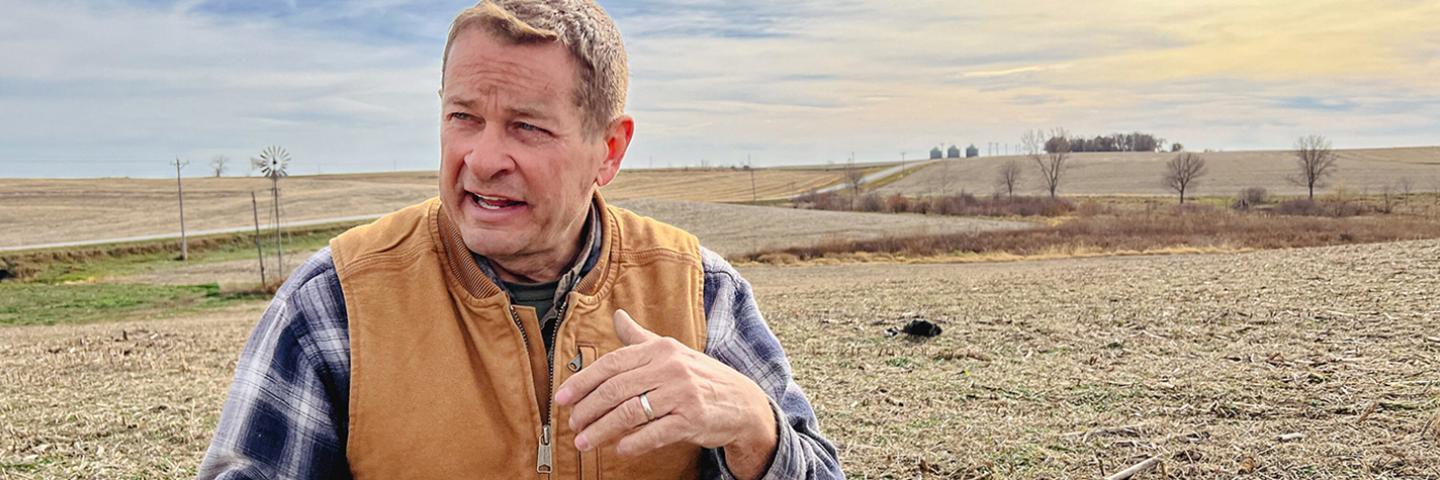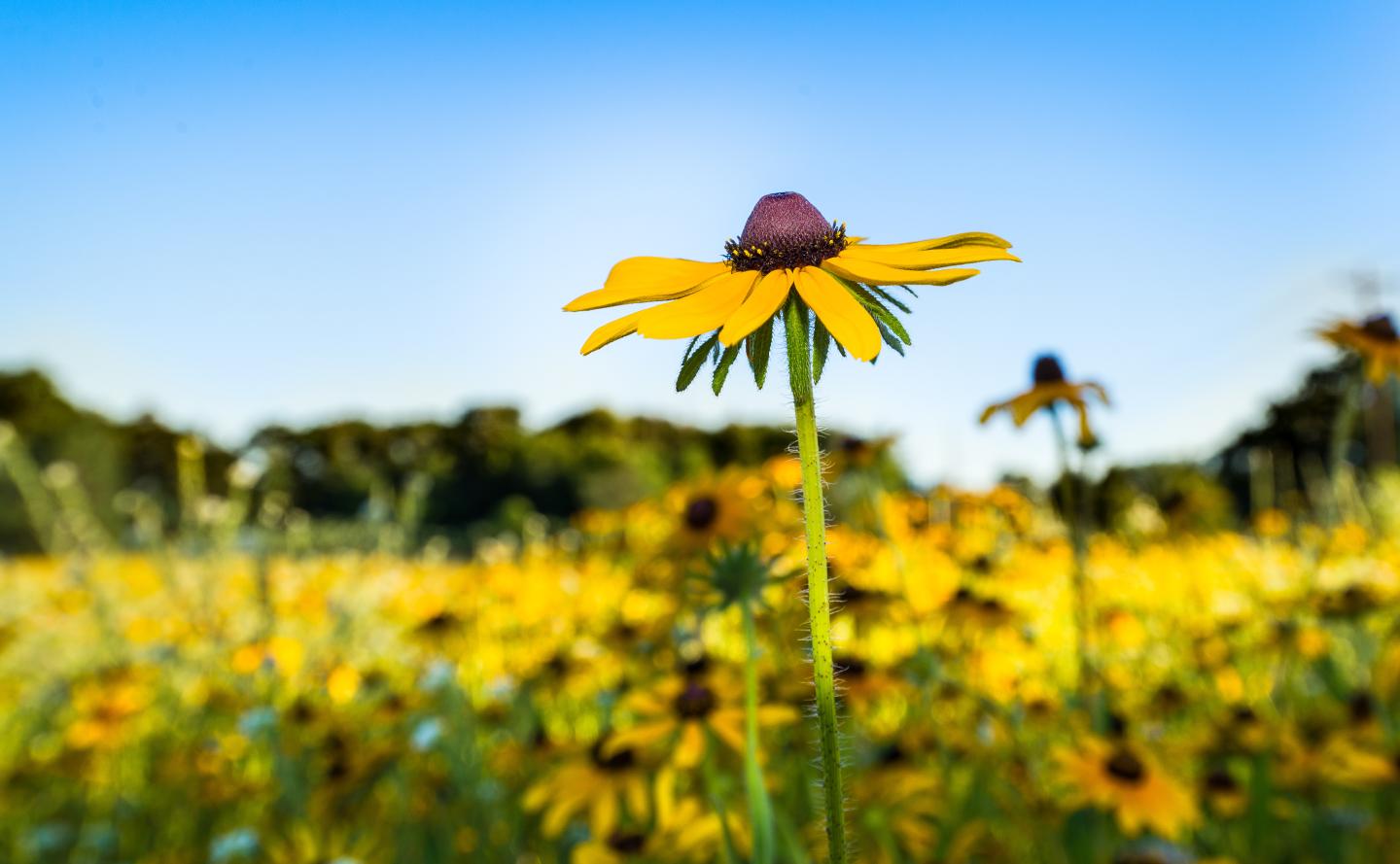
The Conservation Stewardship Program (CSP) helps you build on your existing conservation efforts while strengthening your operation.
On This Page

Sign-up deadline: Friday, October 31, 2025
Application Deadline for FY 26 CSP Classic funding is Friday, October 31, 2025*
Overview
The Conservation Stewardship Program (CSP) is a voluntary conservation program that encourages producers to address resource concerns in a comprehensive manner by undertaking additional conservation activities; and improving, maintaining, and managing existing conservation activities. CSP is available on Tribal and private agricultural lands and non-industrial private forest land. CSP is a working lands program that helps you build on your existing conservation efforts while strengthening your operation. The program provides equitable access to all producers, regardless of operation size, crops produced, or geographic location.
Through CSP, we can help you build your business while implementing conservation practices that help ensure the sustainability of your entire operation. Good land stewardship not only conserves the natural resources on your farm, ranch or forest, it also provides multiple benefits to local communities, including better water and air quality, as well as food and fiber. Eligible lands include cropland, pasture lands, rangeland, farmsteads, and non-industrial private forest lands. It includes agricultural land under the jurisdiction of an Indian tribe.
CSP encourages land stewards to improve their conservation performance by adopting additional activities while improving or maintaining existing activities. NRCS will make CSP available nationwide on a continuous application basis with periodic application cut-off dates for ranking periods.
Minnesota Conservation Stewardship Program Ranking Pools
The State Conservationist, in consultation with the State Technical Advisory Committee and Local Work Groups, will focus program impacts on natural resources that are of specific concern for a State, or the specific geographic areas within a State. Applications will be evaluated relative to other applications addressing similar priority resource concerns to facilitate a competitive ranking process among applicants within a State who face similar resource challenges.
For CSP, agricultural land (cropland and/or pastureland) compete separately from nonindustrial private forestland applications (NIPF). Agricultural land applications are ranked and compete against other agricultural land applications within the same agricultural land geographic region. NIPF are ranked and compete against other NIPF applications within the same NIPF geographic region.
*NRCS accepts applications for its conservation programs year-round. NRCS sets state-specific, ranking dates to evaluate applications for funding that account for producer needs, staff workload and ensure potential participants have ample opportunities to apply. Funding is provided through a competitive process.
Additional Information
Applications and Forms
If you’re interested in applying for NRCS conservation programs, contact your local NRCS office. To apply, you’ll have to complete an application as well as have other forms on file.
Learn MoreReady to get started?
Contact your local service center to start your application.
How to Get Assistance
Do you farm or ranch and want to make improvements to the land that you own or lease?
Natural Resources Conservation Service offers technical and financial assistance to help farmers, ranchers and forest landowners.

To get started with NRCS, we recommend you stop by your local NRCS field office. We’ll discuss your vision for your land.
NRCS provides landowners with free technical assistance, or advice, for their land. Common technical assistance includes: resource assessment, practice design and resource monitoring. Your conservation planner will help you determine if financial assistance is right for you.
We’ll walk you through the application process. To get started on applying for financial assistance, we’ll work with you:
- To fill out an AD 1026, which ensures a conservation plan is in place before lands with highly erodible soils are farmed. It also ensures that identified wetland areas are protected.
- To meet other eligibility certifications.
Once complete, we’ll work with you on the application, or CPA 1200.
Applications for most programs are accepted on a continuous basis, but they’re considered for funding in different ranking periods. Be sure to ask your local NRCS district conservationist about the deadline for the ranking period to ensure you turn in your application in time.
As part of the application process, we’ll check to see if you are eligible. To do this, you’ll need to bring:
- An official tax ID (Social Security number or an employer ID)
- A property deed or lease agreement to show you have control of the property; and
- A farm number.
If you don’t have a farm number, you can get one from USDA’s Farm Service Agency. Typically, the local FSA office is located in the same building as the local NRCS office. You only need a farm number if you’re interested in financial assistance.
NRCS will take a look at the applications and rank them according to local resource concerns, the amount of conservation benefits the work will provide and the needs of applicants. View Application Ranking Dates by State.
If you’re selected, you can choose whether to sign the contract for the work to be done.
Once you sign the contract, you’ll be provided standards and specifications for completing the practice or practices, and then you will have a specified amount of time to implement. Once the work is implemented and inspected, you’ll be paid the rate of compensation for the work if it meets NRCS standards and specifications.

